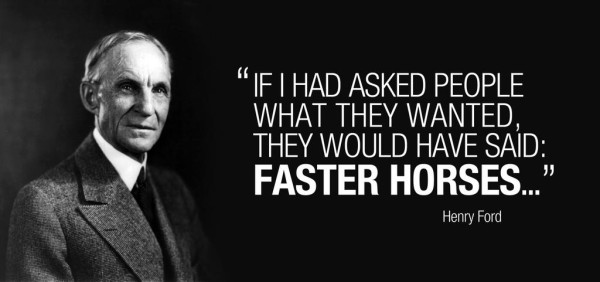
What it Takes to Start a Startup
In this blog, we take look at the keys of starting a successful startup, based on personal experience.
0 min read.
Like many of the Norwegian startups, Dogu started out as the project of a young NTNU student with a dream and it has grown massively since. Our CEO, Sindre Haaland, is a graduate of NTNU’s School of Entrepreneurship and also has a background in computer science. Over the course of the last 4 years, the startup has grown into a small business with a projected annual revenue for 2015 of 12 million Norwegian Kroner.
Along this path to success, there have been many challenges, many lessons, and at least a few failures. The purpose of this new blog series, “The Entrepreneurship Journey: From Startup to Small Business” will be to capture some of the funny (and not so funny) stories, highlight some of our successes, and share what we learned from our failures.
We will also take a look at other local startups and small business, conduct interviews, and host interesting lessons from many perspectives. Our primary goal is to create a unique and thoughtful series on startups and small businesses in order to see what it takes for entrepreneurs to succeed in a competitive marketplace. We hope that by sharing stories of success and struggle, we will be able to help other young entrepreneurs along in their journey. We hope to learn as much as we teach and to have a great time doing it along the way.
The Keys to Success
In this first post, we will look at what it takes to start a startup. Generally, in starting a business, you need three primary things: great people, a product that people want to buy, and money to get going. If you have the first, great people, then the other two will follow naturally.

Finding Great People
Regardless of the size, type, or nature of your organization, surrounding yourself with great people will make the difference between success or failure. I have served in the military, worked on Wall Street, and led international disaster response teams but regardless of where I am or what I am doing success has always revolved around one key dynamic: having the right people. Building a team that works well together and functions as one to accomplish complex goals is difficult but not impossible.
Building a team that works well together and functions as one to accomplish complex goals is difficult but not impossible.
Most startups generally begin as a group of friends with a common idea or business goal. This is great because it means you know each other and have built a foundation of trust. However, once you have grown enough to begin hiring, you must take a serious look at your current abilities plus your future needs. If you are selling a product, you need a few key people: someone to understand what users need, someone to design a product that meets those needs, and someone to market it and sell it to them.
Usually, startups can only afford to hire one person at a time during their initial growth stage. This means that you have to really sit down, figure out your strengths and weaknesses, and create a position to fill exactly what you need. Once the position is open and you begin your recruiting process, you need to find a way to separate the intelligent, driven, hard-working types from the rest of the applicants. You need to bring them through an interview process that really allows you to understand what they bring to the table, and then you need to extend a compelling offer to the best possible candidate.
You have to really sit down, figure out your strengths and weaknesses, and create a position to fill exactly what you need.
Once you have great people, you need to keep them motivated and give them new challenges. Your employees are a direct representation of your organization. How they really feel about their jobs and what they say to friends on the weekends will be the real test of whether you are on the right track as an organization. I can’t speak on behalf of other companies, but I can honestly say that when people ask me about how I enjoy working at Dogu, my face lights up and I have no shortage of positive things to say. We have brilliant people, a good working environment, a horizontal leadership structure, and the flexibility to develop and pursue our own projects. If you are a startup or small business, what are some of the perks you provide to employees? If you work for a startup, what are your biggest likes or dislikes? What can you do to improve your working environment, increase productivity, and create fun and motivation in the process?
Once you have great people, you need to keep them motivated and give them new challenges.
Creating a Product
You must know what customers want, you must produce that efficiently, and you must ensure that you are constantly seeking to improve your product. If you do those three things effectively, your chances of failure as a startup are reduced dramatically. Almost half of small businesses fail in the first 3 years and a shocking 90% of tech startups fail in that same three year period. It seems like new tech startups are popping up everywhere and making tons of money; but that’s just not the case. The truth is that creating a quality product and staying ahead of the competition in such a rapidly moving and technological market is incredibly hard work. It requires constant effort, ongoing analysis, and a very deep insight into what customers need… often knowing what to make before they even know that they need it.
You must know what customers want, you must produce that efficiently, and you must ensure that you are constantly seeking to improve your product. If you do those three things effectively, your chances of failure as a startup are reduced dramatically.
This is a very difficult process because as a general rule, customers don’t even know what they want until they see it in action. So, that means that you must generate an idea, create a design, build a prototype, and get it in front of decision makers before they even realize that they want it; and to make things even more difficult, you must do it before another company does. This goes back to my initial point about having great people because you truly must have the best, brightest, and hardest working employees when creating and developing a new product as a startup. Once your brand is well-recognized, you may finally get a chance to relax a bit; but even then, the work doesn’t stop and the need for great people never goes away.
In order to create the perfect product you must first realize that there is no such thing as a perfect product. That’s right, you can’t do it. Everyone’s needs are different and every organization requires different uses for the same general product. Therefore, it is imperative to understand that you cannot cater to everyone and you must instead strive to be the absolute best at providing one specific product or service. As you grow, you may have the opportunity to expand. However, in the beginning, you must combine a thorough knowledge of what you are best at creating, with what your ideal customer base is, and how to target them. You must learn to think “From the Outside In” and create a product that meets needs, is easy to use, and is enjoyable, as Harley Manning and Kerry Bodine put it in their book by the same title.
You cannot cater to everyone and you must instead strive to be the absolute best at providing one specific product or service.
Henry Ford once said “If I had asked people what they wanted, they would have said faster horses”. While the quote itself is funny, the depth behind it is immense. As we all know from history class, Henry Ford went on to create Ford Motor Company; but he was not the first to invent the automobile. Instead, what he did was create the first automobile that was easy enough to use and affordable enough for the middle class to buy, thus revolutionizing the transportation industry forever. That’s just one example of a man who understood the needs of a market, created an affordable product, and continued to improve it in order to fit the needs of customers.

At Dogu, we have very recently gone through this process ourselves. Although we initially offered a variety of products and consulting services, we have had to narrow in on our three biggest products and focus primarily on one main product. Our flagship product is SalesScreen, which to creates visualization of sales data while also using gamification to boost motivation by providing badges, rank, and other game-like features for sellers to unlock.
The big takeaway here is that we realized we could not be the best at everything. So, we picked what we felt is our most promising product for revenue growth, and we have focused most of our efforts on developing it. As a result, we have seen a massive increase in positive user feedback on that product and we have experienced large growth in new customers. We are constantly looking for new ways to meet needs, increase usability, and make our products enjoyable. It is not an easy task, but it is fun and it is a great learning experience to understand what customers want and how to provide it.
In creating a product, where are some places you might go to gauge user need and to find where you might play an essential role? How have you analyzed your strengths and weaknesses or located your niche market? What have you done to solicit customer feedback and implement improvements? Where do you see flaws in our model or find things that we could do to improve our business model?

Getting the Money
The topic of finding, creating, saving, and using money is almost cyclical in practice and therefore it’s a bit tricky to cover here, but I will do my best. By cyclical, what I mean is that in order to create revenue, you must create value but in order to create value you must create revenue so that you can build products. As a result, most startups must receive their initial funding from outside sources by developing an idea or prototype product and then pitching it to potential investors.
In order to create revenue, you must create value but in order to create value you must create revenue so that you can build products.
Most companies seek money from investors who in turn seek some form of financial return from and/or ownership in the company; at Dogu, we didn’t do that. We are what you might refer to as a “boot strapped startup” or a “self-funded startup” which means that we didn’t use outside seed capital to grow the organization from startup into small business. Instead, Dogu started by building income through consulting.
After we had developed enough income from consulting and personal investment, we began to transition from a consultancy to a product-based company. To be very honest, that is a very difficult switch to make because you must make a smooth transition from consulting revenue to product revenue without becoming overburdened by workload or moving too fast. Developing a product prototype without investor funding is a bit of a juggling act, to say the least. In a future blogpost, I will highlight some of the major benefits of being a self-funded startup.
Even for those who do go from idea to prototype and then from investment to funding, it is no small task and the competition is fierce. In order for a potential investor to give you money, they generally like to be fairly certain that they will see a good ROI. This means that your value proposition, customer segments, cost structure, and intended revenue streams must be clearly laid out. Ideally, your startup should be so well designed and so well thought-out that investors find themselves at ease with loaning you tens of thousands of dollars and quite confident that they will see their money again plus extra very soon.
In order to answer some of the questions, you will likely draw up a business plan and create a business model canvas with answers to key questions. Some of these include “who are our suppliers?”, “what are our distribution methods?”, “how do we create value?”, and “how will we receive and process payments?” The good news is that there are already many resources available to help you plan your venture. A simple web search can help you find all of the tools you need to plan your business.

What's Next?
Once you have answered the questions, marketed your product, generated recurring income, responded to customer feedback, and improved your product accordingly, then what? Well, the cycle never stops, really. If you want to generate income, you will have to remain competitive, and in order to do that, you will have to continuously improve your processes based on customer needs. The good news is that over time, if you do this correctly, you will grow from fast-paced crazy startup life to CEO of a small or medium sized business with regular stable income and good products which meet needs of consumers regularly. Or, of course, you could sell your business, create a new startup, and do it all over again…
Whatever it is that you choose to do, I wish you luck and I hope that you find this post as well as future posts to be helpful, relevant, insightful, and most importantly… funny. Because even if you make millions of dollars, money cannot buy happiness.







